The PlayStation 4 marks a turning point for Sony. It's a humble gaming machine designed to integrate into your living room, a far cry from the pomp and circumstance with which the company debuted its predecessor, the PlayStation 3.
That's a good thing, since the PS3 proved a prohibitively expensive box that was more difficult to program for and less online-friendly than its competitor, Microsoft's Xbox 360. Sony's suffered some well-deserved criticism in the seven years since the PS3's debut, and seems to have taken that criticism to heart.
The PS4 is a beautiful piece of kit. With ample power under the hood, a controller that's a joy to hold, and excellent system-level support for social sharing and streaming, Sony's latest console is poised to perform very well in the years to come.
But right now it's a little underwhelming. For one, the interface is obtuse. Plus, useful features like DLNA (Digital Living Network Alliance) streaming are missing. And few of the games you can play on it right now are worth paying attention to, much less buying the system for. It's a strong base to build from, but Sony still has a lot of work to do if it hopes to conquer the console gaming market.
Another black box
The new PlayStation's rhomboidal black chassis is deceptively small, and sleek enough to slip unobtrusively into your existing media center. It plays well with most receivers, but forget about composite cables—the PS4 kicks out video via a single HDMI on the back of the box.
 The PlayStation 4 cants back like a low-slung supercar.
The PlayStation 4 cants back like a low-slung supercar. That back panel is predictably sparse, sporting just the single HDMI jack, a digital audio out, a port for the power plug, an ethernet jack, and an auxiliary port for the PlayStation Camera (sold separately, naturally). Inside are a pair of radios, one for Bluetooth 2.1 and the other for 802.11 b/n/g wireless, but that's it as far as connectivity goes. Unlike the Xbox One, which has a back panel festooned with extra USB ports and an HDMI input that can suck up signals from your other devices, the PS4 is ill-equipped to dominate your living room.
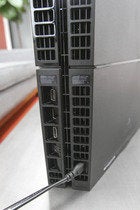
I like that Sony built a dedicated jack for the camera on the back of the machine, because it allows you to mount the accessory on top of your TV or media center while keeping its assorted cables tucked neatly out of sight. It's a nice change from the PS3's USB PlayStation Eye camera, which often had to be plugged into the front of your console, leaving an unsightly black cord dangling in front of your media center.
The PS4 also sports a pair of front-mounted USB 3.0 ports, and that's it. It's a bare-bones box that could charitably be called "streamlined," so you'll have to do some port juggling if you want to charge more than two controllers at a time or hook up a flash drive.
While the PS4's 500GB, 5400 RPM internal hard drive can be replaced, there is no official support for external hard drives. Plug in external storage and you can save screenshots, videos, and saved games, but not store the games themselves. The PS4 currently lacks support for a lot of fringe uses, actually. It can't play music CDs, stream media over your home network, or run Linux, all of which the PS3 could handle with ease.
 Sony took a fairly minimalist approach this time around.
Sony took a fairly minimalist approach this time around. Of course, most people—myself included—don't need their game console to do any of those things. They need it to play games, stream Netflix/Hulu Plus/Amazon Instant Video, and play DVDs/Blu-rays, and Sony's latest console makes doing those things a breeze, nay a pleasure, thanks to a simplified interface and a vastly improved gamepad.
A better gamepad
The DualShock 4 is the best controller Sony has ever designed. At first glance it looks like a modestly evolved version of the DualShock 3, with a goofy light bar where the four-LED player indicator used to be and a big ol' clickable two-point capacitive touchpad on top, pushing the PlayStation button down a few centimeters. Flanking the touchpad are the Share and Options buttons, which have replaced the venerable Start and Select buttons. There's also a mono speaker on the front, which could be really cool if developers use it wisely instead of, say, suddenly squawking out bad audio logs late at night.
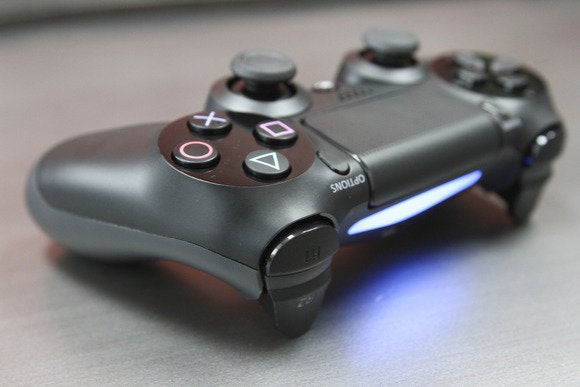 It may not look like much, but lay hands on the DualShock 4 and you'll never want to let go.
It may not look like much, but lay hands on the DualShock 4 and you'll never want to let go. The touchpad and lightbar seem like frivolous additions—few games or apps use either in interesting ways. Free-to-play shooter Warframe requires you to swipe and click the touchpad to select and use your powers, for example, while Killzone: Shadow Fall changes the color of your controller's lightbar from green to red as your character gets hurt. It's a neat trick, but seeing as the last thing you'll probably want to do while playing a really awesome game is look down at your hands, it probably won't meaningfully improve your gaming experience.
For that kind of evolution, look to the DualShock 4's sticks and triggers. Both are significantly improved from the DualShock 3, a controller that caught a lot of flak over the years for its rounded analog sticks and lightweight triggers. While I never had much trouble using the DualShock 3, I've found the DualShock 4's sturdier and slightly larger chassis, concave triggers, and redesigned sticks feel significantly better in my hands. Building a small circular depression on the top of each stick makes it much more comfortable to rest your thumbs on them for extended gaming sessions, though I wish the sticks themselves were a little tighter and offered more resistance.
 The touchpad might offer some intriguing control options in the future, but the lightbar is a frivolous addition.
The touchpad might offer some intriguing control options in the future, but the lightbar is a frivolous addition. The DualShock 4 still charges via a USB cable, though it charges via micro-USB rather than mini-USB this time around. It's a nice touch; since most non-Apple smartphones and tablets now come with micro-USB charging cables, you should have no trouble finding extra charging cables lying around. You'll need 'em, too. During testing, my DualShock 4's non-replaceable lithium-ion battery ran out of juice after 7 hours of gaming, a depressingly brief battery life that inspired me to keep my controller plugged into my phone charger so I could refill the battery without having to get off my couch to hook the controller up to the console.
You get a cheap headset, and you get a cheap headset, and you get a cheap headset!
Sony also packs a cheap mono headset into every PS4 box, and you can jack it into the stereo headset jack below the PlayStation button to participate in voice chat or voice control. This headset is perhaps the chintziest piece of technology I've ever used, with a single earbud, a mutable mic and an impractical plastic clip connected by a single audio cable.
It looks cheap, and it is cheap—it's essentially a free pack-in, after all. But there's a silver lining: While the earbud's output is muffled at best, the built-in microphone performs remarkably well. Friends in party chat and those watching me stream games complemented the audio quality of the voice chat, but more importantly, they didn't complain about the mic rubbing against my shirt or picking up extraneous room noise.
Most gaming headsets that connect via USB, optical audio, or 3.5mm audio jack will work with the PS4, though you may need to download a system update first. I tested both the Plantronics Rig and the Astro A50 headsets, and both worked perfectly.
Remote Play works, but it's not worth buying a Vita for
If you happen to own a PlayStation Vita, I think you'll be pleasantly surprised by how well the PS4's Remote Play feature functions—when both devices are on the same wireless network and in close proximity to one another. I streamed both Killzone: Shadow Fall and Resogun to my Vita via Remote Play while I was sitting about 12 feet from the console, and both games looked fantastic on the Vita's 5-inch OLED screen. I noticed no appreciable input lag or graphical distortion while playing either game—as long as I stayed within 15 feet and didn't let any major masonry get between me and my PlayStation 4.
 The Vita is a great system, but Remote Play is not a good reason to buy one.
The Vita is a great system, but Remote Play is not a good reason to buy one. As soon as I took the Vita into the bedroom or the bathroom of my cramped one-bedroom apartment, both games started dropping frames and suffering noticeable graphical distortion. They weren't unplayable, per se, but they weren't terribly enjoyable under those conditions. Your mileage may vary based on your own network setup, but if you don't already own a Vita I wouldn't recommend picking one up just to play your PS4 games remotely—there's very little leeway for an ideal experience.
You can also use the Vita (or a smartphone or tablet running the PlayStation App) to do some second-screen stuff with PS4 games, though none of the games available at the time of this writing take compelling advantage of that feature. You can set waypoints in Assassin's Creed IV: Black Flag, for example, or check stats and modify your loadouts in Call of Duty: Ghosts. Again, it's a neat touch, but nothing worth paying for.
Trust me, you want to buy the camera
Before we move on from hardware, I want to take a moment to discuss the new PlayStation Camera. It's an optional accessory—you have to shell out $60 for one since they don't come packed in with the console—but after bringing one home for testing I have a hard time recommending you purchase a PS4 without it.
 The PlayStation Camera lets you play silly motion-control games like Sony Playroom, but its chief value is in letting you stream your play area and use voice commands from across the room.
The PlayStation Camera lets you play silly motion-control games like Sony Playroom, but its chief value is in letting you stream your play area and use voice commands from across the room. The new camera functions much like a proto-Kinect: You can use it to participate in voice chat, log into your machine via face recognition, issue voice commands to the built-in microphone, or play motion-controlled games like Just Dance 2014 and the preinstalled Sony Playroom tech demo.
While the lexicon of voice commands the PS4 understands is relatively meager, I predict it will be patched pretty quickly to support a broader vocabulary and become competitive with the Xbox One's impressive voice control system. You can tell it to take a screenshot or launch a game, for example, but it can't recognize common commands like "Netflix" or "Power off."
Sharing is worth caring about
But that's not why you should invest in a PlayStation Camera. You need it to get the most out of the PS4's built-in sharing features, specifically streaming gameplay via Twitch and Ustream. While you can stream gameplay footage just fine sans camera, you'll be able to communicate with viewers only via voice chat or by clumsily typing out messages using the gamepad. Connecting a camera to your console allows you to inset a live feed of your play area into the stream, which lets you liven up your broadcast by bringing people over to play games together and talk to viewers about what's going on in the stream.
These are the things YouTube stars are made of.
You can start streaming at any time with a tap of the Share button, a physical manifestation of Sony's decision to embrace online communities and the burgeoning game-streaming culture. It's worth noting that you can't stream or capture screenshots/video of apps or the system interface. You can only share your experience playing games (not streaming media apps) but you can do so with unprecedented ease.
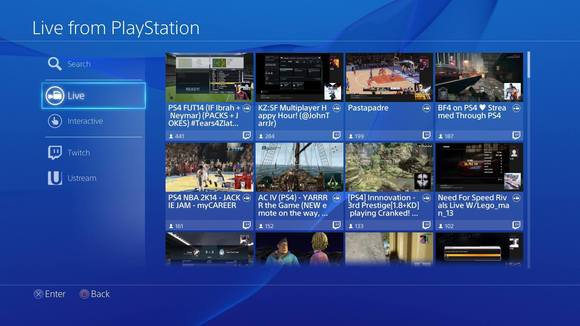 Streaming is an integral part of the PlayStation 4 experience. There's even a "Live From PlayStation" section of the main menu that lets you tune in to other streams and (eventually) interact with them via the console.
Streaming is an integral part of the PlayStation 4 experience. There's even a "Live From PlayStation" section of the main menu that lets you tune in to other streams and (eventually) interact with them via the console. The Share button is configurable, but by default you can hit it at any time to bring up a menu for uploading screenshots or video clips to your social networks, as well as capturing them if the game allows. Developers can selectively disable capture functions.
You can capture a screenshot or continue capturing a video clip. The system is constantly recording video with a 15-minute buffer, so hitting the Share button lets you immediately edit/share a clip of your last 15 minutes of gameplay. Or you can start streaming your gameplay live on Twitch or uStream. For now you can grant the PS4 access to only your Twitter and Facebook accounts, though we'll hopefully see more services integrated soon. (I'm looking at you, YouTube.)
 You can choose to link your Facebook account to your PSN ID, which will pull in your profile pic and allow you to share stuff from your PS4 directly to Facebook.
You can choose to link your Facebook account to your PSN ID, which will pull in your profile pic and allow you to share stuff from your PS4 directly to Facebook. It's worth noting that integrating your Facebook account with your PS4 allows you to do more than just post from the Share menu. The PS4 will pull in your profile pic, associate it with your PSN ID, and show it to people on your friends list who agree to a mutual sharing of "Real Names," a.k.a. the name you typed in when you set up your PSN ID. It's a small change, but a welcome one that makes it easier to remember which one of your chums is "x-xGhostDog86x-x" on your friends list, which has been expanded past the PS3's paltry 100-friend limit to ridiculous 2,000.
If you play only one launch game, play Resogun
Whether or not you'll find any games worth streaming is ultimately a matter of personal taste. Personally, I find slim pickings in the PS4's launch lineup. I prefer to play multi-platform games like Assassin's Creed IV: Black Flag or Need for Speed: Rivals on a PC. PlayStation-exclusive games like Knack and Killzone: Shadow Fall don't interest me.
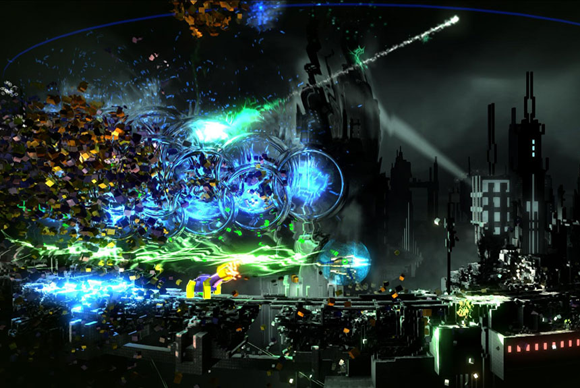 Resogun is the outstanding exception to an otherwise unappealing launch game lineup.
Resogun is the outstanding exception to an otherwise unappealing launch game lineup. The only exception is Resogun, a vibrant side-scrolling shooter that pays fantastic homage to Defender. It's a PS4 exclusive that's free for PlayStation Plus members and developed by Housemarque, a Finnish studio with an excellent track record. Since every PS4 comes with a two-week free trial for PS Plus, there's no excuse for you to skip this game.
Problem is, Resogun is a great game that would work equally well on the PS3 or the PS Vita, not to mention the PC or a competing console. The best launch game on Sony's latest console does nothing to showcase the console's unique capabilities, and that demonstrates a real lack of foresight on Sony's part. The Playroom demo does interesting things with the PS Camera, but that's all it is—an interesting tech demo.
The PS4 is a gaming machine without any games worth playing, and that's a real problem.
Also, get a PlayStation Plus membership
PS Plus is your best stopgap while we wait for Sony to address the PS4 game drought. Plus members can play both Resogun and Contrast on PS4 for free as of this writing, though more games will cycle through in the months to come. A year's worth of membership will cost you $50, and it's a pretty good deal when you factor in the free games and the discounts you'll receive on the PlayStation Store. Also, you must be a Plus member to play PlayStation 4 games online, a change of policy from the PlayStation 3.
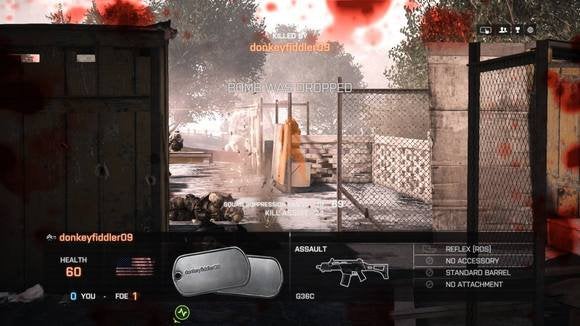 Yup, you're gonna need PlayStation Plus if you want to play games (badly) online.
Yup, you're gonna need PlayStation Plus if you want to play games (badly) online. Thankfully, if you share a console, only one person has to shell out for PS Plus membership. Once you set the console as your primary PS4, everyone who logs in can play games online. The console allows for you to store up to 16 accounts' worth of information, but you can also log into a PS4 with a "Guest" account that allows you to download your PSN ID to play games and earn credit for trophies, then delete it when you leave.
It's also worth noting that the dual local ID/PSN ID system that plagued the PlayStation 3 is gone. You log into your PS4 with your PSN ID, and that's the only account you'll use across all aspects of the system.
Classic XMB interface needs an overhaul, not a facelift
Unfortunately, Sony failed to overhaul the PS3's venerable Xross Media Bar (XMB) interface. The new interface, which Sony calls the PlayStation Dynamic Menu, is still built on clunky rows of icons stacked atop one another.
 The PS4 interface is functional, but confusing. Why are all these notifications important, for example, and why are they ranked in no discernible order?
The PS4 interface is functional, but confusing. Why are all these notifications important, for example, and why are they ranked in no discernible order? Minor changes abound: The Trophy system, for example, has been updated retroactively across all PlayStation consoles so that each achievement sports a little icon indicating how rare it is based on how many other players have earned it. I would have preferred that Sony update its firmware so that we didn't still have to manually sync our trophy data with Sony servers, but no dice. You can also initiate Real Name transfers with people on your friends list: When one of you asks and the other agrees, both players can see each other's real names (or whatever you have tied to your PSN ID).
 Adding rarity indicators to every PSN Trophy was a small but much-appreciated touch.
Adding rarity indicators to every PSN Trophy was a small but much-appreciated touch. The interface feels snappy and fast to navigate, due in part to the PS4's capacity to keep an app and a game running in suspended mode simultaneously. In practice, that means you can quickly flip back and forth between a game of Resogun and an episode of Breaking Bad streaming on Netflix. You can spend as much time as you like browsing the PDM or even putting the console into suspend mode without having to worry about losing your game or your place in the episode.
Bottom line
The PlayStation 4 is going to change the gaming market with an eclectic library of downloadable indie and free-to-play games running on a revamped operating system that can support things like game streaming, social sharing, and remote play. It won't change it with whiz-bang graphical upgrades or exclusive software—though those would be greatly appreciated.
It's easy to see the potential here. What if one day I could wake up, use my Vita to boot up the PS4 in the other room and launch Planetside 2, then invite my friends into a squad via PSN, Facebook, and Twitter before leaping into a massive firefight and streaming the action? Gosh, that sounds like a pretty good Saturday.
The best launch game on Sony's latest console does nothing to showcase the console's unique capabilities.
But right now, it's just potential—the PS4 doesn't do much except play and stream games, and it currently lacks a game library worth paying $400 for. And that's troubling, especially when Microsoft is fielding a competing black box in an effort to gobble up the lion's share of the console market before Sony has time to find its stride.
Anda sedang membaca artikel tentang
PlayStation 4 review: Sony's best console yet is off to a shaky start
Dengan url
http://manfaattea.blogspot.com/2013/11/playstation-4-review-sonys-best-console.html
Anda boleh menyebar luaskannya atau mengcopy paste-nya
PlayStation 4 review: Sony's best console yet is off to a shaky start
namun jangan lupa untuk meletakkan link
PlayStation 4 review: Sony's best console yet is off to a shaky start
sebagai sumbernya
0 komentar:
Posting Komentar